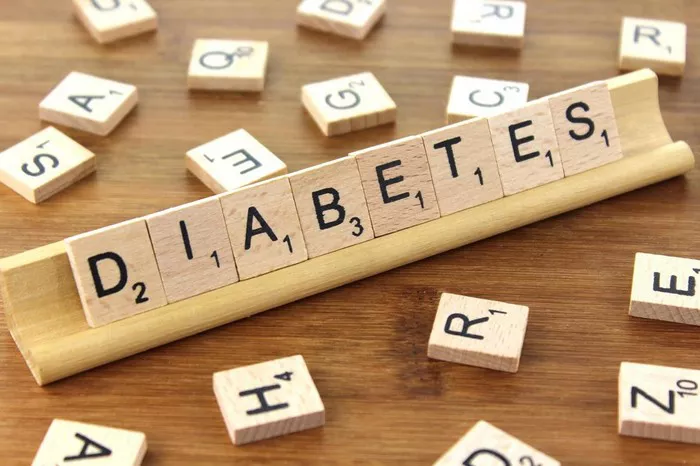Diabetes, a chronic metabolic disorder characterized by high blood sugar levels, affects millions of people worldwide. Type 1 and Type 2 diabetes are the two most common forms of the disease, each with its own set of challenges and complications. However, there persists a debate within medical circles and the public about which type is the worst. In this article, we aim to provide a thorough examination of the characteristics, complications, and management of both types of diabetes to dispel misconceptions and offer clarity on this often-debated topic.
Understanding Type 1 Diabetes: The Autoimmune Condition
Type 1 diabetes, formerly known as juvenile diabetes or insulin-dependent diabetes, typically develops in children, adolescents, or young adults. This form of diabetes is characterized by the immune system’s attack on the insulin-producing beta cells in the pancreas, leading to a lack of insulin production. Without insulin, the body cannot regulate blood sugar levels effectively.
Individuals with Type 1 diabetes require lifelong insulin therapy to survive. This often involves multiple daily injections of insulin or the use of an insulin pump to deliver the hormone continuously. Despite careful management, people with Type 1 diabetes are at risk of acute complications such as diabetic ketoacidosis (DKA), a life-threatening condition characterized by dangerously high levels of ketones in the blood.
Understanding Type 2 Diabetes: The Metabolic Syndrome
Type 2 diabetes, the most common form of diabetes, typically develops in adulthood, although it is increasingly affecting younger populations due to rising obesity rates. Unlike Type 1 diabetes, which involves the immune system, Type 2 diabetes is primarily characterized by insulin resistance, where the body’s cells become less responsive to insulin’s effects. Initially, the pancreas produces extra insulin to compensate for this resistance, but over time, it may fail to keep up with the body’s demand, leading to elevated blood sugar levels.
While lifestyle factors such as obesity, physical inactivity, and poor diet contribute to the development of Type 2 diabetes, genetics also play a significant role. Management of Type 2 diabetes often involves lifestyle modifications such as dietary changes, regular exercise, and weight management, along with oral medications or insulin therapy in some cases.
Comparing Complications and Comorbidities
When comparing the complications and comorbidities associated with Type 1 and Type 2 diabetes, it’s essential to recognize that both types of diabetes can lead to serious health issues if left untreated or poorly managed.
Complications of Type 1 Diabetes:
- Diabetic ketoacidosis (DKA): Without insulin, the body breaks down fat for fuel, leading to the production of ketones and the development of DKA, a potentially life-threatening condition.
- Hypoglycemia: Insulin therapy can sometimes lead to episodes of low blood sugar, or hypoglycemia, which can cause dizziness, confusion, and loss of consciousness if left untreated.
- Long-term complications: Over time, Type 1 diabetes can lead to complications such as cardiovascular disease, kidney failure, nerve damage (neuropathy), and eye problems (retinopathy).
Complications of Type 2 Diabetes:
- Cardiovascular disease: Type 2 diabetes significantly increases the risk of heart disease, stroke, and peripheral artery disease.
- Kidney disease: Diabetes is the leading cause of kidney failure, known as diabetic nephropathy, which can result in the need for dialysis or kidney transplantation.
- Neuropathy: Nerve damage caused by diabetes can lead to numbness, tingling, or pain in the extremities, as well as digestive issues and sexual dysfunction.
- Retinopathy: Diabetes can damage the blood vessels in the retina, leading to vision problems and potentially blindness if left untreated.
While both types of diabetes can lead to severe complications, some research suggests that Type 2 diabetes may be associated with a higher risk of certain long-term complications, particularly cardiovascular disease and kidney disease. However, the individual risk factors and outcomes vary depending on factors such as age, duration of diabetes, and overall health status.
Management Strategies and Challenges
Managing both Type 1 and Type 2 diabetes requires a comprehensive approach that addresses various aspects of the condition, including blood sugar control, medication management, lifestyle modifications, and regular monitoring of complications.
Management of Type 1 Diabetes:
- Insulin therapy: People with Type 1 diabetes require insulin injections or the use of an insulin pump to regulate blood sugar levels continuously.
- Blood sugar monitoring: Regular monitoring of blood sugar levels is essential for adjusting insulin doses and preventing complications.
- Diet and exercise: A balanced diet and regular exercise help stabilize blood sugar levels and improve overall health.
- Continuous glucose monitoring (CGM): CGM systems provide real-time data on blood sugar levels, allowing for more precise insulin dosing and management.
Despite advances in insulin delivery and glucose monitoring technology, managing Type 1 diabetes can be challenging due to the risk of hypoglycemia, the need for strict adherence to medication regimens, and the psychological impact of living with a chronic condition.
Management of Type 2 Diabetes:
- Lifestyle modifications: Dietary changes, regular exercise, and weight management are critical for controlling blood sugar levels and reducing the risk of complications.
- Oral medications: Many people with Type 2 diabetes can manage their condition with oral medications that help improve insulin sensitivity, reduce blood sugar levels, or stimulate insulin production.
- Insulin therapy: In some cases, people with Type 2 diabetes may require insulin therapy to achieve optimal blood sugar control, particularly as the disease progresses.
Despite the availability of effective treatments for Type 2 diabetes, managing the condition can be challenging due to the progressive nature of the disease, the need for ongoing medication adjustments, and the potential for complications if blood sugar levels are not adequately controlled.
Conclusion
In conclusion, the debate over which type of diabetes is the worst—Type 1 or Type 2—is complex and multifaceted. Both types of diabetes present unique challenges and complications, and the severity of the disease varies depending on factors such as individual health status, access to healthcare, and adherence to treatment regimens.
Rather than focusing on comparing the severity of Type 1 and Type 2 diabetes, it’s essential to recognize the individualized nature of diabetes care and the importance of early detection, timely intervention, and ongoing management to prevent complications and improve quality of life for all individuals living with diabetes. By promoting education, awareness, and access to comprehensive healthcare services, we can work towards reducing the burden of diabetes and improving outcomes for affected individuals worldwide.


























